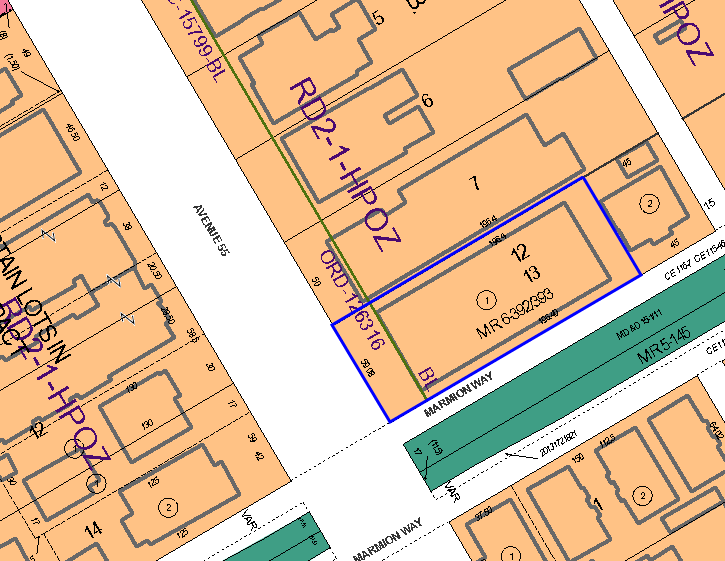All over the city, there are zombie street dedications increasing the cost of housing.
Wait… what? (You say.)
A street dedication is how the city responds to old, narrow streets that don’t meet modern standards. It can’t start ripping down peoples’ buildings and taking away their front yards (well, it could, but that would require eminent domain and, therefore, expensive compensation to the victims).
What it does instead is create a “street dedication”. That’s an imaginary line running across the front setbacks of a whole street. If you don’t do anything with your property, the line stays imaginary. But, if you want to develop your property, the city takes away the portion of your lot between the line and the street as a sort of trade.
Here’s a picture of a street dedication line (the thin green line):
And here’s what happens when the city actually takes the property (see the notch cut out of the property:
One thing you might have noticed from the above: It takes a hell of a long time before the city gets enough land via these dedications to actually widen a street. That’s because owners only develop their property slowly, over decades. So, many of the street dedication ordinances that are presently in action were actually created decades ago, when the city’s priorities were very, very different.
But street dedications are increasing the cost of housing TODAY. How?
Well, the good news is that, for the purposes of calculating how many units you can build on a lot, the city lets you include the square footage that will be lost to the dedication.
But they still take the land. And the setback for your new building is then going to be 10 or 15 back from the new street line. That means you’ve got less room to fit structure and, crucially, parking.
That means that, for streets with dedications, each of the impacted lots can carry fewer units, further limiting the scope for development and, therefore, housing supply.
Are there instances where the city should take land to widen streets? Obviously. But these kinds of regulations impose higher housing costs. And, in an era of housing emergency, we should think very, very carefully about whether the benefit of wider streets at some day in the distant future is worth the cost of increased housing costs right now.

